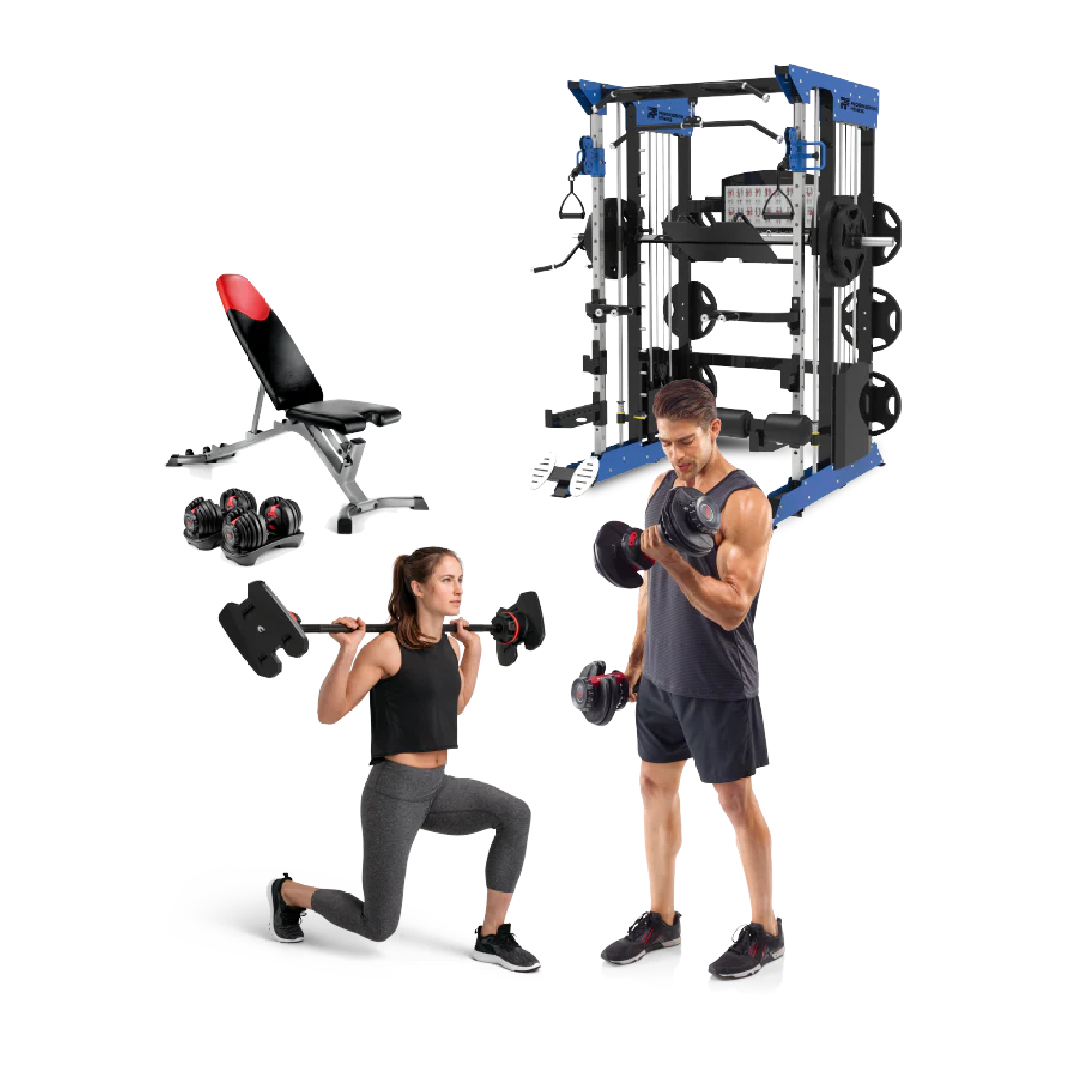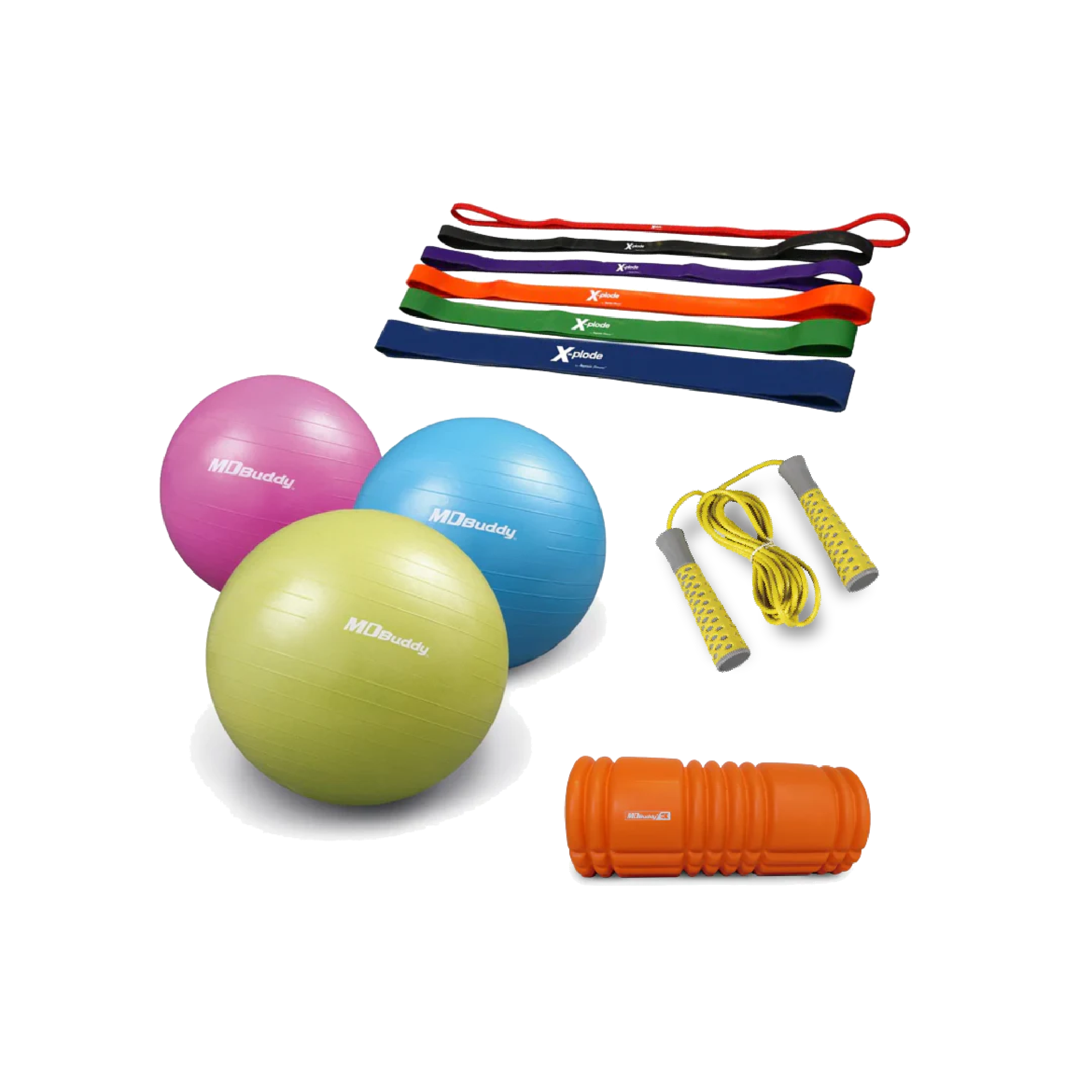Coming to Terms: Pump Up Your Fitness Literacy
Aren’t strength training and power training the same thing? What about Isolated and compound exercise? Or aerobic and anaerobic? And what do they mean by fast-twitch and slow-twitch? Didn’t fitness use to be just running around and lifting stuff so you could be buff until you’re 90? It might have been thought of that way once, but science has once again crashed our “life is simple” party.
Their intrusion is well-meant, though. Every year, people abandon their fitness plans because of injuries or lack of progress or both. That’s a shame because fitness isn’t just about the shape of your body or the length of your life. It’s about enabling your body to fulfill your life – whether you want to pump up for athletic achievement or just do some functional training to make every day more pleasant. Understanding not only what you’re doing but why you’re doing it can mean the difference between success and failure. Understanding how it helps you will make your focus all the more clear. So we’re going to demystify those terms and help you make the exercise choices that work for you.
School is in. Sit up straight, pay attention, and no copying off the brawny guy’s paper.
Compound and Isolated Exercises

The word “compound” refers to something that’s formed from a combination of parts. So when you work a muscle group or “chain” of muscle groups at the same time, you’re doing compound exercise – in a way that closely resembles how you use these muscle chains in your daily activities. Besides providing functional benefits, compound exercises are also excellent for muscle growth, strength-building and weight loss. Naturally, it’s better to target multiple muscle groups than just one, right? Not so fast. Sometimes compound exercise plays favourites. Some muscles get more exercise than others. That’s where isolation exercise comes in. Isolation exercises generally target one muscle action around one joint. Examples include the bicep curl, the chest fly and the calf raise. Directly targeting a weaker muscle can get the whole muscle group and chain back up to speed so you can work through those plateaus that roadblock progress toward your fitness goals.
Benefits of compound and isolation exercises: We’re mentioning both together here because, if done properly, they really do work as a team. To ultimately be successful, you’ll need proper form and a full range of motion. It’s a good idea to have a trainer or other fitness expert watch how you work out. Once you have that tackled, you’ll be able to reap the above-mentioned benefits of strength, functionality, muscle growth and weight loss. You might also throw in better balance and fewer aches and pains if you’ve made sure every muscle group in the chain has gotten the attention it needs.
Power Training vs. Strength Training

To novice lifters, it’s easy to miss the difference between power training and strength training. The difference comes down to three things: purpose, method and physical results.
So how do you get stronger muscles? By weakening them. You need to exert a force on your muscles that actually creates tiny tears in their fibre. That prompts your body’s natural defences to swoop in and, assuming your muscle is under attack, build it back up better and stronger than it was before. So we do more “damage” to the tissue, continually tricking our body into making it stronger and stronger. As if this deceit upon our own well-meaning bodies isn’t underhanded enough, we look for ways to be more efficient at it. So we take advantage of the fact that stretching muscles with an eccentric muscle contraction (opening a joint like your elbow) tears more fibre than a muscle-tensing concentric contraction (closing a joint). That’s why you’ll see experienced, muscular athletes spending more time lowering their dumbbells than raising them.
That’s where strength training and power training diverge. But don’t worry. They converge in the end to make you a healthier person with a happier life.
Power Training

The purpose of power training is to enable you to deal with resistance – usually in the form of weight – in a quick manner. Thinks of scooping up a stairway-bound toddler or putting something heavy on a high shelf. You want the “oomph” to perform these tasks quickly and without muscle failure. You train to get it by simulating it – by applying the maximum amount of force as fast as possible. The prescribed formula is strength + speed = power. You can’t just will this to happen. Your body has to be physically able to do it.
Within your muscles are two different types of fibres. One of these – the fast-twitch fibre – is made specifically for power. These fibres are fueled by a chemical process called glycolysis, which converts the glucose stored in your muscles into other chemical compounds. One compound, ATP, is required to stimulate the muscle contractions needed for full-tilt, turn-on-the-dime action. You always have a small amount of “free-floating” ATP set by for the occasional quick power burst – but not enough to keep your fast-twitchers twitching if you’re into sports or have a physically demanding job.
To build up those kinds of stores, you’ll need to increase your glycolytic efficiency, which requires a larger muscle mass to house more glucose. This is why Olympic sprinters or football running backs often sport conspicuously big muscles to fuel their frequent explosive speed. Some people are born with a proclivity toward fast-twitch muscle fibres, but others can develop it. Through explosive, repetitive lifting of heavy but manageable weights (or your own weight), you can create plenty of beneficial muscle fibre tears.

Other explosive movement exercises can build up those fast-twitch muscle fibres, too. Jumping, rope jumping, sprinting, high-intensity interval training (HIIT) and biking can all enhance your glycolytic efficiency. They do this, in a sense, by taking your breath away. Multiple explosive movements done in short bursts demand a lot of energy - so much so that they surpass your blood oxygen’s ability to keep up. That's when your glucose fuel kicks in like a dragster’s nitro supply. For that reason, this type of exercise is dubbed “anaerobic,” meaning, “without oxygen.”
Benefits of Power Training: The primary benefits are obvious – swift take-off velocity, agility, and the not-quite-Incredible-Hulk-like ability to lift heavy things you couldn't lift before. But there are other benefits that last beyond your glorious sprint, hockey deke, or feat of strength. Power training and anaerobic exercise can increase your bone strength and density, promote weight maintenance, boost your metabolism, fight depression, pump up your energy, and reinforce your joints. They also reduce your risk of diabetes or heart disease. However, if you've already been diagnosed with have either of those two conditions, ask your doctor if you’re in shape for sudden, high-intensity exercises like these. It wouldn’t hurt to consult a doctor even if you haven’t been diagnosed.
Strength Training

So what if you need to hold something heavy aloft for more than a few seconds? That requires strength, and even your most muscle-bound trainers will tell you that you don’t necessarily need to be built like Mr. Universe to have it. It’s not measured by the diameter of your biceps but rather by your ability to overcome resistance imposed on you by weight (free weights, machine weight or your own weight) or another source like resistance bands.
Strength training can be contrasted with power training in several ways. First, strength training works by overloading – repeatedly testing your muscles with ever-increasing weight loads. Second, it requires a consistent increase in weight as you get stronger. This kind of lifting is more about taking your time than quick bursts of action. In that sense, strength training falls in line with aerobic ("with air") exercise. Both increase blood flow within the muscles, supplying more oxygen to your slow-twitch muscle fibres (if there were fast-twitch fibres, you knew there would have to be slow ones). The end result is increased endurance. Because your supply of oxygen is small but constant, you generally won't flame out as you will with explosive movements. You won't need big muscles for storage, which is why athletes like marathoners tend to have sleeker builds.
However, when marathoners need that finishing kick to reach the finish line before their rivals, they’ll need their fast-twitch muscles – just as athletes with explosive power will need slow-twitch muscles to maintain their pace. So it goes with our own daily functions – picking up a heavy object is one thing, carrying it to the house is another.

Benefits of Strength Training: There are many ways that improving your strength enhances your quality of daily life – today and in the future. It makes daily tasks easier, improves your balance and coordination, burns more calories, reduces your risk of diseases and chronic conditions like lower back pain, obesity, depression and anxiety, heart disease and diabetes. It thickens your bones, builds up your tendons and ligaments, and strengthens your body overall so you can enjoy life for years to come. You’ll greet the future with more working muscle mass, greater confidence, and a brighter outlook.
Have Your Plan? Flaman Fitness Has Your Equipment.

If you feel informed and inspired to start the right exercise program for you, check it out with your doctor then call or visit your nearest Flaman Fitness Location. Talk with our fitness experts about where you are now, where you’d like to be, and how you’d like to get there. They’ll help you find the high-quality machine that can make a high-quality machine out of you.
Feel free to visit flamanfitness.com and check out our top-brand lines of:
- Strength and power-building weight sets, Olympic bars, benches, cages and racks
- Cardio-boosting bikes, treadmills, ellipticals, steppers, rowers, and Max Trainers,
- Versatile home gyms, workout stations, and accessories for overall daily fitness!
Category: Your Fitness Resource
Tags:
aerobic exercise
anaerobic exercise
Canadian
cardio
compound exercise
concentric muscle contraction
eccentric
exercise
exercise workout
exercises
fast-twitch muscle fiber
fat
filter_Fitness-Tips
filter_Workouts
fitness
fitness jargon
Fitness-Tips
goal setting
health
HIIT
home gym
home gyms
isolated exercise
jargon
power training
slow-twitch muscle fiber
strength
strength training
weight lifting
weights
Workout
workout:boxing
workout:dumbbell
workout:dumbbells
workout:HIIT
workout:home gyms
workout:running
workout:strength
workout:weights





